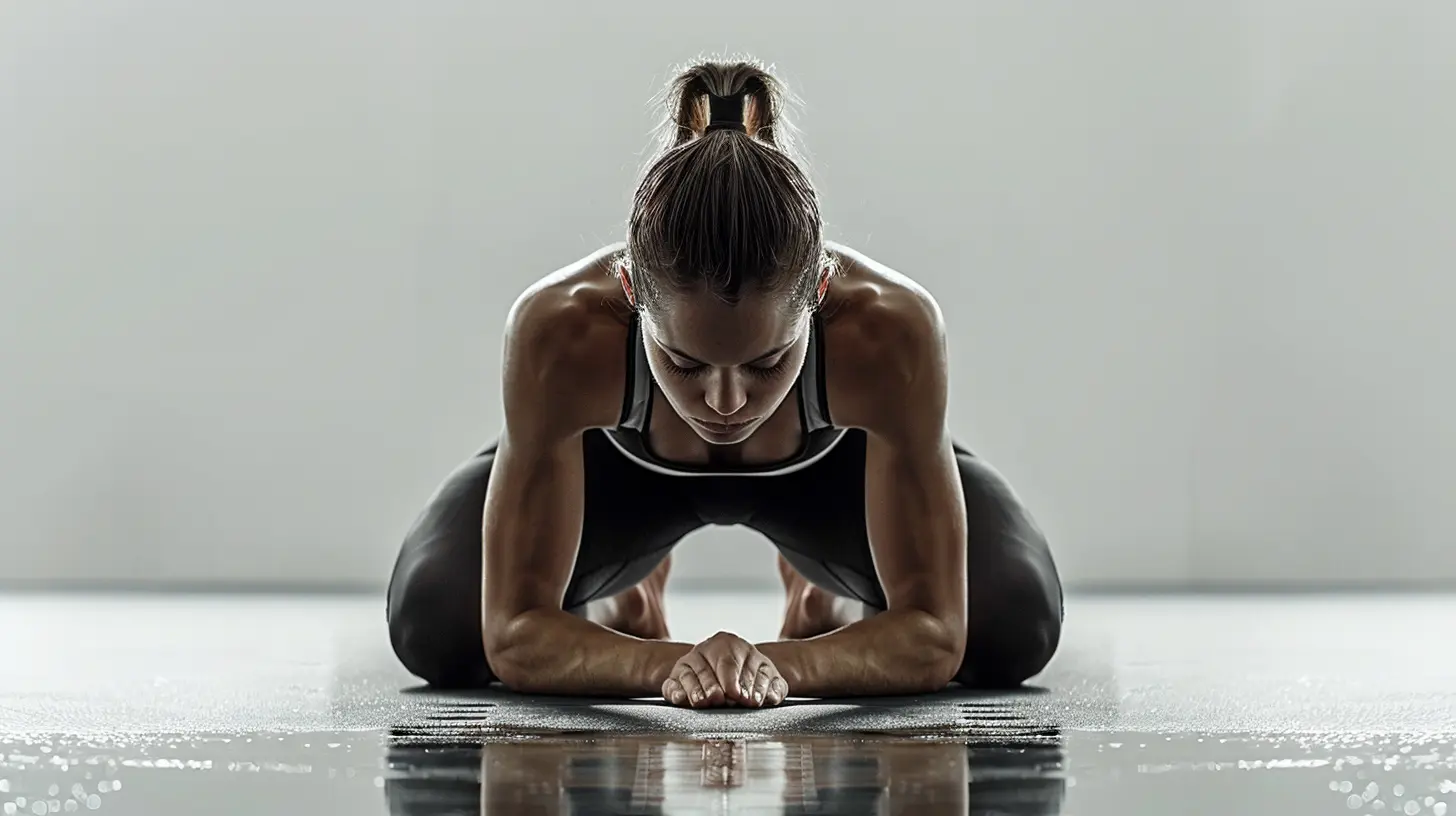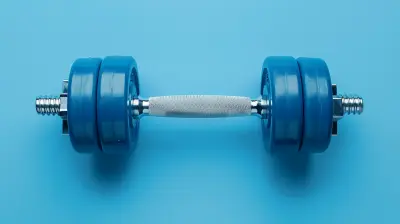Post-Workout Recovery: Stretching and Mobility Drills for Faster Healing
29 July 2025
Let’s be honest—most of us are so laser-focused on crushing our workouts that we forget about what comes after. You know, that part where your muscles scream at you the next morning, asking, “What did you do to me?” That’s where post-workout recovery swoops in like a superhero.
Here’s the secret sauce: it’s not just protein shakes and foam rolling (although those help). It’s stretching and mobility drills that really move the needle when it comes to faster healing, improved performance, and injury prevention. But don’t just take my word for it—let’s dive deep and break this down, step by step.

Why Post-Workout Recovery Even Matters
So, you’ve just finished a killer session. Your muscles are pumped, your shirt is drenched, and you feel like a sweaty rockstar. But what happens next?When you exercise—whether it's weightlifting, running, spinning, or yoga—you put micro-tears in your muscle fibers. That might sound bad, but it’s actually how muscles grow stronger. The key? Giving them the right tools to repair and recover efficiently.
Fail to recover properly, and you could risk:
- Delayed-onset muscle soreness (DOMS) that kicks in like a freight train
- Decreased range of motion
- Stiffness that makes walking up stairs feel like climbing Everest
- A higher risk of injury (not cool)
Bottom line—recovery isn’t optional. It’s essential. And stretching and mobility are two of the most underrated weapons in your recovery arsenal.

Stretching vs. Mobility: What’s the Difference?
Before we jump into drills and techniques, let’s clear up a common confusion.Stretching is about lengthening your muscles. It helps reduce tightness and restore flexibility. Think of it like pulling on a rubber band to stretch it out.
Mobility, on the other hand, is about how well your joints move through their full range of motion. It includes flexibility, sure—but also strength, control, and coordination. It’s the difference between just touching your toes and being able to fluidly squat, twist, and reach without pain.
Both matter. A lot.

The Benefits of Stretching After Your Workout
Let’s start with the basics—stretching. Here’s why your post-sweat ritual should include a few good stretches.1. Reduces Muscle Tension and Soreness
Stretching helps clear out lactic acid build-up and improves blood flow to worn-out muscles. That means less soreness the next day and happier muscles overall.2. Gives Your Body a Chance to Cool Down
Jumping straight from sprint intervals to sitting at your desk? Not great. Stretching allows your heart rate to come down gradually, helping your nervous system shift from “fight-or-flight” to “rest-and-digest.”3. Improves Posture and Flexibility
Tight muscles can pull your body out of alignment. Stretching helps release those areas, making it easier to stand tall, move freely, and avoid those pesky imbalances that can lead to injury.4. Helps Mentally Reset
Stretching can serve as a short, mindful pause. Taking a few minutes to breathe deeply while you stretch actually helps release stress—both mental and physical.
Static vs. Dynamic Stretching: When to Use What
Here’s a quick clarification. Not all stretching is created equal.- 🌀 Dynamic stretching involves movement. It’s great pre-workout to warm up your joints.
- 🧘 Static stretching involves holding a position for 15-60 seconds. This is your go-to for post-workout recovery.
We’re focusing on static stretching here—this is where your muscles chill out after the grind.
Must-Do Post-Workout Stretches (And How to Do Them Right)
These stretches target the major muscle groups that typically get tight after a workout. Hold each one for 20-60 seconds and remember to breathe through it.1. Hamstring Stretch
After leg day or cardio, your hammies are probably screaming.- Sit down with one leg extended.
- Reach toward your toes while keeping your back straight.
- You should feel a gentle pull, not pain.
2. Hip Flexor Stretch
Sitting and squats both crush your hip flexors.- Kneel with one foot in front and shift forward into a lunge.
- Push your hips down and forward.
- Your front knee should stay above your foot.
3. Chest Stretch
Perfect after upper-body workouts.- Stand in a doorway or next to a wall.
- Extend your arm behind you and gently rotate your torso away.
- Feel the stretch across your chest and shoulder.
4. Lat Stretch
Because back muscles matter too.- Kneel and reach your hands forward on a bench or low platform.
- Drop your chest toward the floor.
- Focus on that deep stretch through your lats and spine.
5. Calf Stretch
Don’t neglect the lower legs—they carry you all day.- Stand facing a wall.
- Press your back heel into the ground as you lean forward.
- Keep both feet facing forward.
Mobility Drills = Secret Sauce for Healing
Alright, now let’s move on to the thing that doesn’t get nearly enough love: MOBILITY.Mobility drills are active movements that help reinforce proper movement patterns, improve joint function, and assist in removing stiffness. Plus, they're just plain awesome for making your body feel looser and more capable.
Here’s how they help optimize recovery:
1. Increases Synovial Fluid Circulation
Sounds science-y, right? This is the fluid that lubricates your joints. More movement = more lubrication = smoother, pain-free movement.2. Enhances Joint Health and Muscle Activation
By taking your joints through controlled ranges of motion, mobility drills help your muscles fire properly when needed. No lazy glutes or stiff shoulders here.3. Speeds Up Muscle Repair Through Blood Flow
Like stretching, mobility work boosts circulation, delivering nutrients where your body needs them most.Top Mobility Drills for Faster Post-Workout Recovery
You don’t need fancy tools or a yoga studio. Just a mat, a little space, and five to ten minutes.1. Cat-Cow (Spinal Mobility)
This one’s a crowd favorite for a reason.- Start in a tabletop position.
- Inhale as you arch your back (cow), exhale as you round it (cat).
- Flow with your breath for 10-15 reps.
2. 90/90 Hip Transitions
Want hip health? This drill is your BFF.- Sit on the floor with one leg bent in front of you at 90°, the other behind you also at 90°.
- Rotate your legs side to side without using your hands—hello, mobility and control!
3. World’s Greatest Stretch
Yes, that’s what it’s actually called—and it lives up to the name.- Step into a deep lunge.
- Place both hands on the ground inside your front foot.
- Rotate and reach your inside arm to the sky.
- Repeat both sides.
4. Shoulder Circles (Controlled Articular Rotations)
Keep your shoulders young and spry.- Stand tall.
- Move your shoulder through a full range of motion—forward, upward, and backward.
- Go slow and stay controlled.
5. Ankle Mobility Rocks
Your feet are your foundation—treat them well.- Kneel with one foot in front.
- Keeping your heel down, gently rock your knee over your toes.
- Do 10 reps each side.
Putting It All Together: Your Easy Post-Workout Routine
So how do you blend stretching and mobility into something doable (and not boring)? Try this basic 10–15-minute cool-down routine:Step 1: Light Cardio (2 mins)
- Walk in place or march slowly to bring your heart rate down.
Step 2: Static Stretches (6 mins)
- Hamstrings (1 min each leg)
- Hip flexors (1 min each side)
- Chest and shoulders (1 min)
Step 3: Mobility Drills (5 mins)
- Cat-Cow (10 reps)
- 90/90 transitions (10 reps)
- World’s Greatest Stretch (5 reps each side)
Boom! That’s a quick, effective post-workout recovery session you can stick to without making excuses.
Tips for Making It Stick
Let’s be real—it’s easy to skip cooldowns when you’re tired or in a rush. Here’s how to make it a habit:- Set a timer. Literally—just schedule 10 minutes.
- Do it while watching TV or listening to music. Multitasking for the win.
- Track your soreness. Nothing’s more motivating than feeling better, faster.
- Make it a non-negotiable. Just like brushing your teeth. No skipping.
Final Thoughts: Stretch Now, Thank Yourself Later
You don’t have to be a pro athlete to take recovery seriously. In fact, the more consistent and intense your workouts are, the more you need to invest in stretching and mobility.Think of it as putting money back into a “muscle bank.” Every time you stretch or do a mobility drill, you’re adding to the account—resulting in fewer injuries, quicker healing time, and better all-around performance.
So next time you finish a workout, don’t just hit "stop" on your fitness app and call it quits. Roll out your mat, breathe deep, and give your body the love it deserves.
Trust me—your muscles will send you a thank-you note in the morning.
all images in this post were generated using AI tools
Category:
Fitness RoutinesAuthor:

Arthur McKeever
Discussion
rate this article
1 comments
Remi Morris
Great tips for a speedy recovery journey!
August 8, 2025 at 4:57 AM

Arthur McKeever
Thank you! I'm glad you found the tips helpful for your recovery journey!


